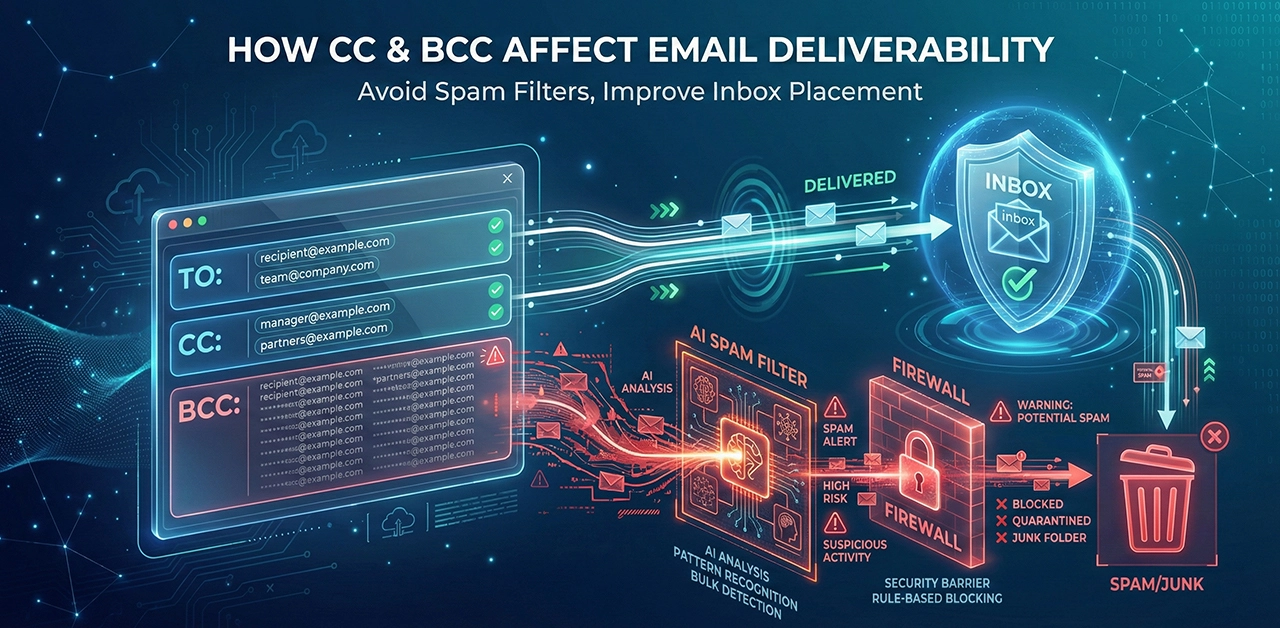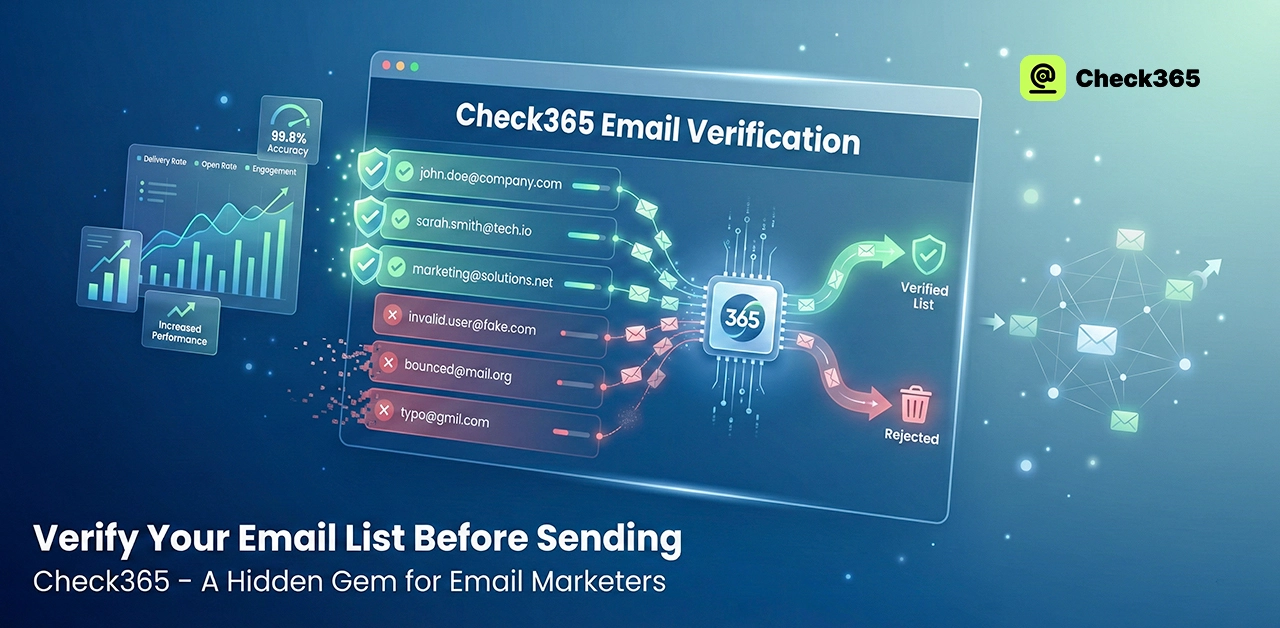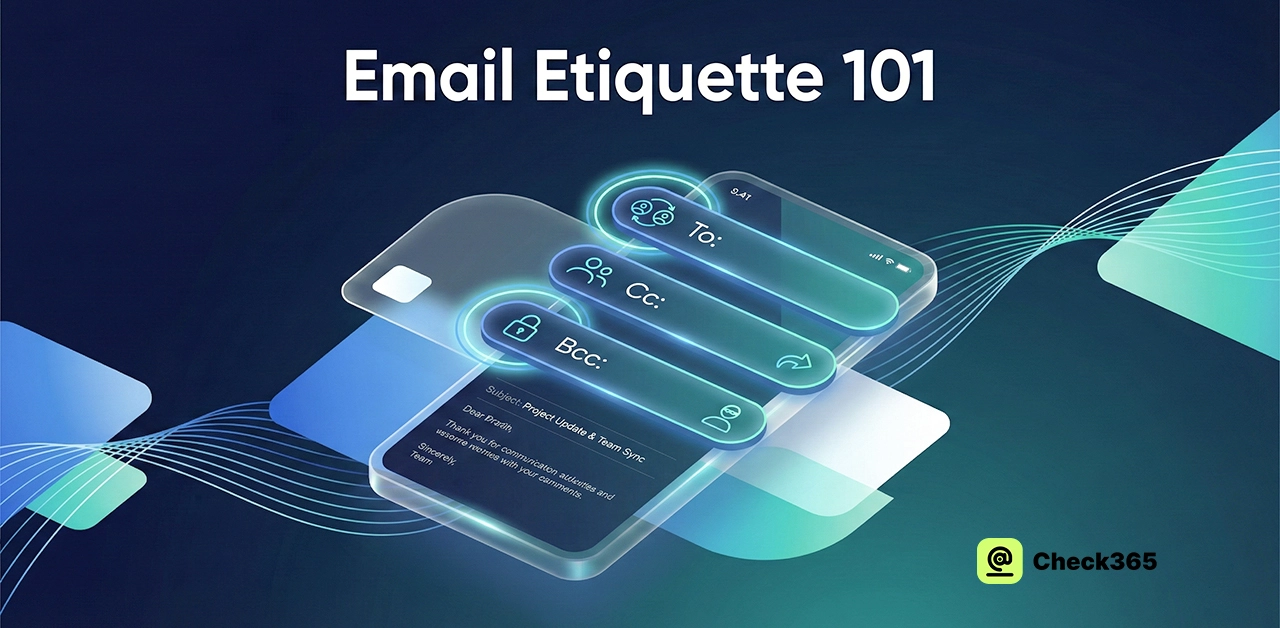Most of us don't know what to do when we see an email bounce for the first time. We want to know what it means. Then we ask, "Why do emails bounce?" "Did we do something incorrect?" "Finally, what should we do?" It's almost never the sender's fault when an email bounces. To stop bounces from happening again, you must first know what a bounce is.
What Is A Bounced Email? - Bounced Email Meaning
When a business or marketing email doesn't get delivered as planned, it's called an "email bounce." There are many reasons why an email might "bounce," but the most important thing to remember is that "bounces" can waste your time and effort and make it harder for people to receive your emails. This means that if your bounce rate is high, servers might start to think that your emails aren't reliable and block them immediately. So, monitoring those lost emails and getting rid of them regularly is important. Let's talk about the different kinds of email bounces first.
What Is A Soft Bounce and Hard Bounce Email - Types of Email Bounce
A soft bounce and a hard bounce are the two categories of email bounces. The other is permanent, but the first is only temporary. A "soft bounce" means the email address is correct and the message has been delivered to the recipient's inbox. But sometimes it bounces because the mailbox was full, the server was down, or the message was too big for the target account. A soft bounce is usually only temporary because the receiver can fix it by clearing out their inbox, or the server can be fixed. You can also fix it by shortening or lengthening your newsletter. If the email address is invalid or doesn't exist, the email gets rejected, and a "hard bounce" occurs. The address should be removed from your list because this will always happen.
Top Reasons For Email Bounce
There are many reasons for bounce back email. Whatever the reason for this bounce, it hampers the email sender's image.
1. A Non-existent Email Address
If the bounce says "non-existent email address," the email address might be wrong, or the person who used it might have left the company. It's also possible that the contact gave you a fake email address. This can happen if you're giving something away online in return for an email. This is why you should go through the contacts in this group and check to see if any of the email addresses are misspelled. If not, try to get in touch with the people another way to ensure the address is correct.
2. Email not delivered
If an email bounces back as "Undeliverable," it means that the server that is supposed to receive it is briefly down, too busy, or couldn't be found. If you can't find the server, it might have crashed or been down for maintenance. In this case, you may need to wait again before sending the email to that address. But if multiple emails sent to this address bounce, it could mean that the server is gone for good.
3. The Inbox Is Full
Your emails will bounce back until there is room for them if your contact has so many that they cannot receive any more. This could mean that the person is no longer using that email address. You should follow up with the person on social media, the phone, or the mail to make sure the address is real, just like you would with an email address that doesn't exist.
4. In Vacation/Auto-Reply
Your emails to that person will bounce if they are away or can't check them. When you see this bounce, your email makes it to the inbox, which is different from other bounces. Keep a close eye on how often this email address appears in this group. You might want to stop sending email to them if it's been months and the person still hasn't returned from holiday.
5. Blocked Email
If the email names are in the "Blocked" section, it means that the receiving server has stopped the email from getting through. This happens a lot in schools and government organizations where servers are stricter about accepting emails. You need to call the person and ask them to either "Safelist" your emails or, if you sent them to a business address, ask their system administrators to stop blocking your IP addresses.
6. Suspended
When the same email bounces repeatedly, servers mark the email address as banned. This means that the email address in question might be banned because it bounces when you send an email and might also bounce with other email users.
Final Thought - Why Do Emails Bounce
There are some things you can do to control email bounce, which makes it hard to talk about. Because email delivery takes two, what your readers do may be stopping you from lowering email mistakes. But if you want to control whether or not emails get delivered, you need to keep an eye on return rates. One thing you can do is look for patterns in bounces. For example, what kind of content fails more often, are there seasonal patterns that make it hard to serve, etc? Other than that, try to stay away from content that might be a trigger, like sales and new chance speeches, file attachments, and text or subject lines that use special characters.




